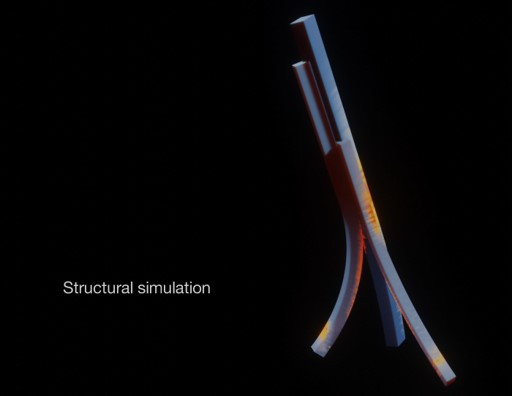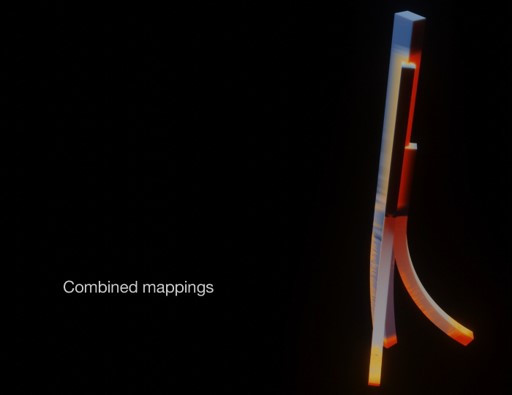
RawLam
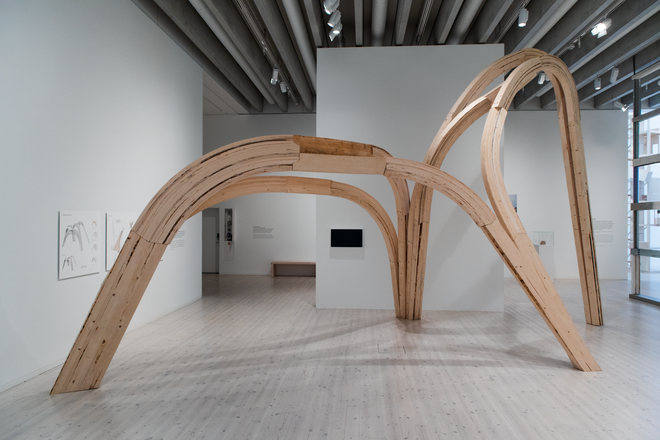
A tighter link across the value chain from forest to timber products is at the core the RawLam research project by the Centre for Information Technology and Architecture. Digital technology allows to assess and design with timber before and during harvest and processing.
Our research investigates how to increase the amount of durable products from timber per unit of raw material, maximise the materials potential as Carbon sink and allow for new expressions for design and engineering.
Increasing the use of wood in construction helps to lower the carbon footprint of buildings and is a first step towards a biobased economy in construction. However due to the industrial logics of timber production, where every piece of wood needs to live up to set quality standards, up to 70% of input forest material is in traditional workflows lost during the production of timber for buildings, as it is declared low quality or cut or milled away in process.

Our research probes whether computational techniques can create a new link between the highly variant qualities and appearances of the natural grown material of wood in nature and timber construction in buildings, where predictability and performance within set specification are key. We pursue a holistic approach, which establishes a flow of data between the currently separate areas of processing trees into timber and the use of it as elements in buildings. For this we need to extend the usual top-down design processes in timber architecture with a bottom up dialog between existing material qualities and design performance requirements.
Our development combines material and computational systems to acquire data from the tree, a custom design system, which analyses the data and generates specification for the cutting of boards and the lamination of the elements.
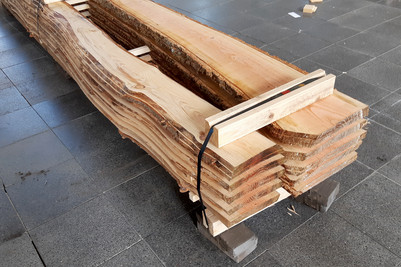
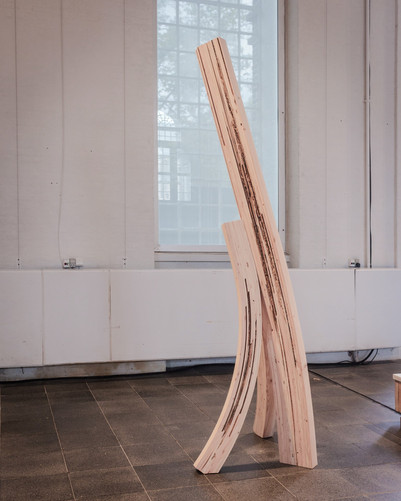
Data acquisition
For Data acquisition we investigate Optical and CT-Scan based techniques to a) reconstruct a three-dimensional representation of the tree and b) to rate the hyper-local material properties of the timber. With the ability to rate the raw timber, it is possible for us to link the material properties to a structural or design model of a glued-laminated timber beam. This allows the matching of local beam requirements with found timber qualities.

Design System
RawLam consists of three glued-laminated timber beams which are interlocked by a screw-less connection (dovetail joint). The concept is developed in a top down manner to fulfil functional criteria in an exhibition setup, all parameters on level of geometry, curvature, section and lamella size and the cutting and placement of lamellas in the beams is the result of our computational model. For this we extend our technologies for the optimisation of gluelam design with a method to determine the performance needs in all areas of the beams.We differentiate between requirements based on position in the layer stack, distance to joints (for milling details) and overall curvature. The weighting of the requirements is informed by a structural model, fabrication limitations and material requirements for detailing of joints.
Design Negotiation And Production
The resulting overall requirements of the layers in the beam assembly are linked to the douglas fir and its inherent material qualities. Within this available material “stock” the desired performative and visual properties are then found by means of a scalable “best-fit negotiation” algorithm.We use multi-objective cutting optimization strategies for each raw board from the douglas fir, find the best match between a list of needed lamella length with associated strength requirements and a list of available wood lengths and properties and specify digitally cutting and lamination of lamella.
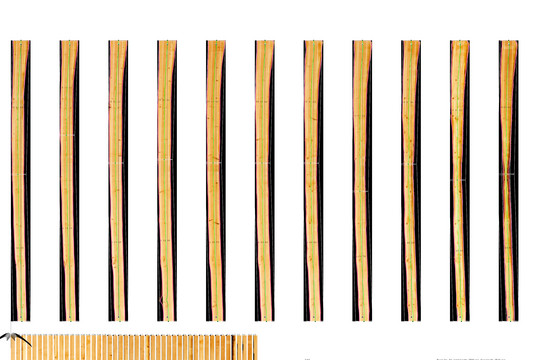
Future Tree to Product workflows
Although RawLam focuses on the steps from the felled tree to the design of a glued-laminated timber beam it demonstrates the potential of tree to product workflows, which could in a future connect data from living trees in the forest with design and making of our environment. We gain a product, which is hyper-optimized in terms of material usage and novel in its visual appearance. We find as well, that more material of the tree was used, than we would have without our data link. We avoided waste and could produce high quality from lower quality wood.
Publications
Svilans, T., Tamke, M., Ramgsaard Thomsen, M. (2022). Integrative strategies across the timber value chain. In Proceedings of the 5th International Conference on Structures and Architecture (ICSA). Aalborg University, Aalborg. (ResearchGate)
Svilans, T. (2021). GluLamb: A toolkit for early-stage modelling of free-form glue-laminated timber structures. 2021 European Conference on Computing in Construction (EC3). European Council for Computing in Construction. (ResearchGate)
Tamke, M., Gatz, S., Svilans, T., Ramsgard Thomsen, M. (2021). Probing Tree to Timber workflows - RawLam, in Kristoffer Weiss, K. , Jøker S., Climate Change, Arkitektens Forlag, Copenhagen, pp. X-XX.
Tamke, M., Gatz, S., Svilans, T., Ramsgard Thomsen, M. (2021). Tree to Product - Prototypical workflow connecting Data from tree with fabrication of engineered wood structure - RawLam. Proceedings of WCTE2021. WCTE2021 - World Conference on Timber Engineering, Santiago, Chile.












